Dale Church (Luster)
Dale Church (Norwegian: Dale kyrkje) is a parish church in Luster Municipality in Vestland county, Norway. It is located in the village of Luster on the western shore of the Lustrafjorden. It is the church for the Dale parish which is part of the Sogn prosti (deanery) in the Diocese of Bjørgvin. The red and white, stone church was built in a long church design around the year 1240 using designs by an unknown architect. The church seats about 200 people.[1][2]
| Dale Church | |
|---|---|
| Dale kyrkje | |
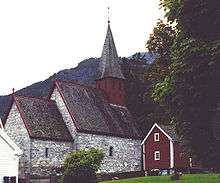 View of the church | |
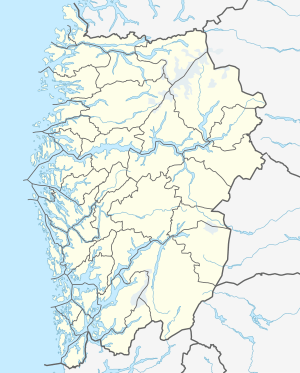 Dale Church Location of the church 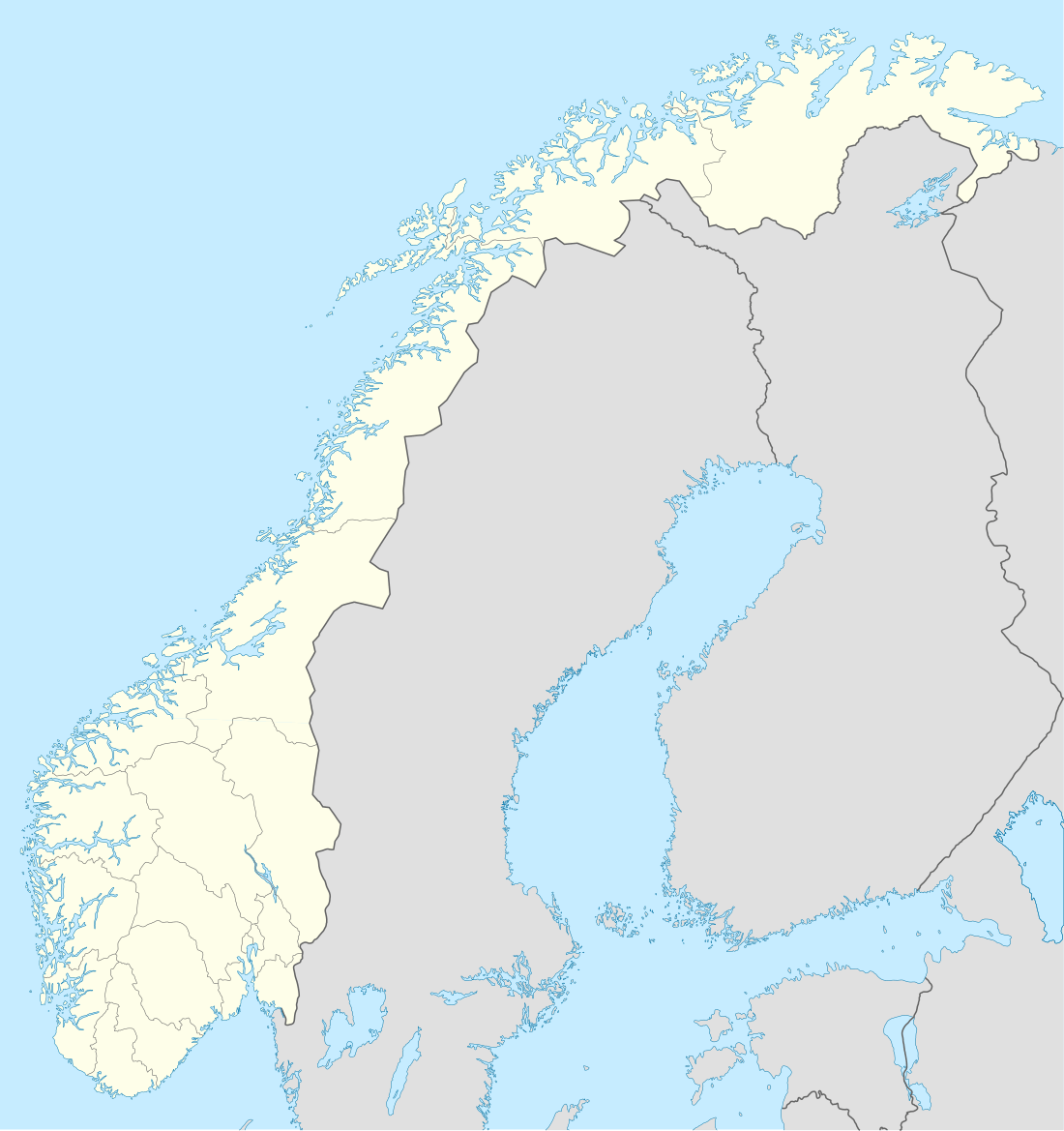 Dale Church Dale Church (Norway) | |
| 61.4413°N 7.4549°E | |
| Location | Luster Municipality, Vestland |
| Country | Norway |
| Denomination | Church of Norway |
| Previous denomination | Catholic Church |
| Churchmanship | Evangelical Lutheran |
| History | |
| Status | Parish church |
| Founded | c. 1240 |
| Architecture | |
| Functional status | Active |
| Architect(s) | Unknown |
| Architectural type | Long church |
| Completed | c. 1240 |
| Specifications | |
| Capacity | 200 |
| Materials | Stone |
| Administration | |
| Parish | Dale |
| Deanery | Sogn prosti |
| Diocese | Bjørgvin |
| Type | Church |
| Status | Automatically protected |
| ID | 84013 |
History
The earliest existing historical records of the church date back to the year 1306, but it was likely built about 60 years earlier. Dale Church in Luster reflects both Romanesque and Gothic styles. The medieval-era church was dedicated to Saint Nicholas. The church is endowed with soapstone sculptures and preserved interiors from the Middle Ages. Construction includes granite in cavity walls with soapstone corners and frames. The nave and choir are rectangular. The porch and the ridge turret above the entrance in the west were built in the 1600s. The Gothic west portal dates to c. 1250. Werner Olsen added a tower in 1635; that tower has not been preserved, and the current tower was added later. The church was restored in 1903 under the direction of architect Jens Zetlitz Monrad Kielland.[3][4][5]
Furnishings for Dale Church are from various eras. The baptismal font from the 1200s is of soapstone and is shaped as a four-leaf clover. The pulpit is in Renaissance style from the 1600s, while the baroque altarpiece and memory boards are from around 1700. The pulpit has pictures of evangelists in the side panels together with depictions of the Crucifixion with Mary and John the Evangelist at foot of the cross, flanked by Moses and John the Baptist. The choir wall is decorated with frescoes from the late 1500s. The bride bench dates from the 1100s and the crucifix from the 1200s.[6][5]
Media gallery
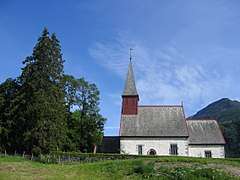 Exterior view of the church
Exterior view of the church Side view of the church
Side view of the church- Church with parsonage
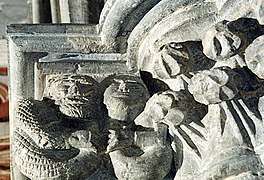 Soapstone carved art work
Soapstone carved art work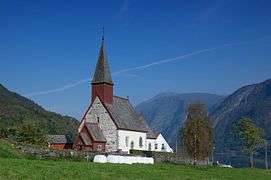 Church and churchyard
Church and churchyard- Interior view of the church
- Soapstone portal in the church
- Rosemaling inside church porch
See also
References
- "Dale kyrkje, Luster". Kirkesøk: Kirkebyggdatabasen. Retrieved 2020-01-17.
- "Oversikt over Nåværende Kirker" (in Norwegian). KirkeKonsulenten.no. Retrieved 2020-01-17.
- Åse Moe Torvanger. "Jens Kielland, Arkitekt". Norsk biografisk leksikon. Retrieved October 1, 2016.
- "Dale kyrkjestad" (in Norwegian). Norwegian Directorate for Cultural Heritage. Retrieved 2020-01-17.
- Hoff, Anna Marta. "Dale kyrkje" (in Norwegian). Fylkesarkivet. Retrieved 2020-01-17.
- Anne Marta Hoff. "Dale kyrkje, Luster". Norges Kirker. Retrieved October 1, 2016.

